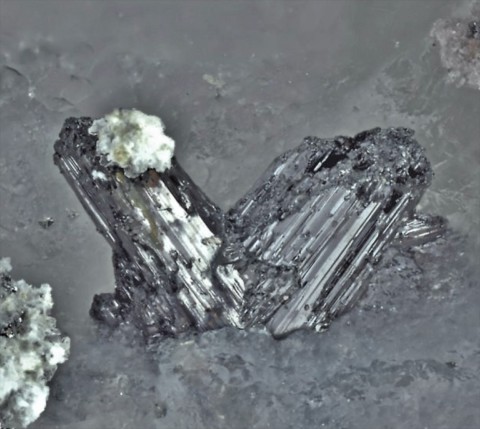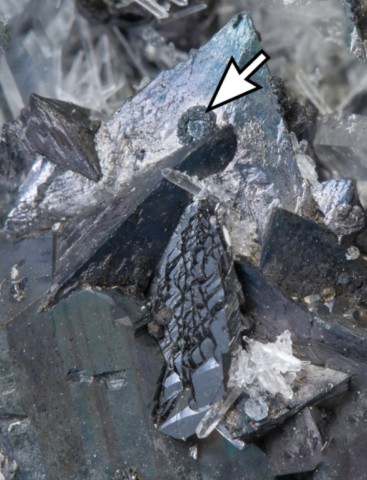 Lautite - Encyclopedia
Lautite - Encyclopedia
Class : Sulfides and sulfosalts
Subclass : Sulfides
Crystal system : Orthorhombic
Chemistry : CuAsS
Rarity : Very rare
Lautite is an extremely rare sulfide from copper-arsenic hydrothermal veins. In its deposits it accompanies other copper and/or arsenic sulfides (tennantite, arsenopyrite, chalcopyrite, proustite...) as well as common sulfides (pyrite, galena...). It owes its name to its discovery location : Lauta near Marienberg (Germany). Lautite occurs in strongly striated, tabular or chunky prismatic crystals, in columnar to finely fibrous or radiate aggregates, sometimes in compact masses. Its color is black to steel gray. It is a very accessory ore of copper.
Main photo : Lautite on tetrahedrite from Mundo Nuevo, Huamachuco, Sánchez Carrión Province, La Libertad, Peru © Jordi Fabre
Lautite in the World

Twinning
Lautite twins on {110}.
Fakes and treatments
No fakes recorded for this mineral species.
Hardness : 3.5
Density : 4.91
Fracture : Undeterminated
Streak : Black
TP : Opaque
RI : -
Birefringence : 0
Optical character : None
Pleochroism : None
Fluorescence : None
Solubility : Nitric acid
Magnetism : NoneRadioactivity : None

